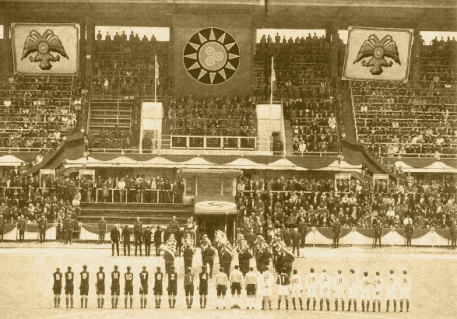Broke ground 1968 | Opened 1969 Demolished 1997 | |
 | ||
Former names Apollo Stadium (1969-84) Closed 1991 (sports & entertainment) Similar Chandler Arena, Beaton Park Stadium, Keilor Stadium, Perth Entertainment Centre, Brisbane Festival Hall | ||
Apollo Stadium (officially called the Apollo Entertainment Centre) was a multi-purpose indoor arena located at 41 Kingston Avenue, Richmond, South Australia, just 5 minutes from the Adelaide city centre. The stadium had an original seating capacity of 4,000 until the early 1980s when the bench seats were replaced by individual plastic seats giving a reduced seating capacity of 3,000 and an overall capacity of just 3,500.
Contents
Opened in 1969, the stadium was named for the Apollo moon landing of the same year.
During the mid-late 1980s, an increasing number of international music acts began to bypass Adelaide as Apollo was seen as too small. This led to the building of the new 12,000 capacity Adelaide Entertainment Centre which opened in 1991, and in 1992 the venue was superseded as the home of basketball and netball by the new 8,000 seat Clipsal Powerhouse. The building then became a church for a few years but was eventually sold and demolished, with the site subsequently being redeveloped for housing.
Sports arena
Apollo Stadium was Adelaide's major basketball arena from 1969 until 1991, being the home court of National Basketball League teams the West Adelaide Bearcats (1979–84), Glenelg Tigers (1979), Forestville Eagles (1981) and Adelaide 36ers, who were the Adelaide City Eagles in their first year (1982–91).
The first ever NBL game was played at a half full Apollo Stadium on 24 February 1979 when the Glenelg Tigers defeated the City of Sydney Astronauts 68-65. Top scorer for the league's inaugural game was Sydney's David Leslie who went for 25 points on 11/22 shooting. For the Tigers, Rick Hodges led the way with 16 points on 7/14 shooting.
The Bearcats and 36ers were almost unbeatable at the venue, with the Bearcats winning the 1982 NBL championship during their time in the league (the Grand Final win over the Geelong Supercats was played in Newcastle). During the 1986 regular season, the 36ers were undefeated at home going 13-0. The only game they lost at Apollo all season was Game 2 of the Grand Final series when they suffered a shock 104-83 loss to the Brisbane Bullets. The 36ers won their first NBL Championship at Apollo two days after their Game 2 loss when they accounted for the Bullets 113-91 in Game 3 in what was coach Ken Cole's last game in charge of the club.
As of the 2016-17 NBL season, no team has equalled Adelaide's 1986 NBL record of being undefeated at home during the regular season.
The stadium hosted the 1981 NBL Grand Final when the Launceston Casino City defeated the Nunawading Spectres as well as the 1982 NBL All-Star Game with the East team defeating the West 153-148 in a high scoring game.
Despite its low spectator capacity Apollo Stadium was known as one of the loudest venues in the NBL during its use from 1979 until 1991. With a capacity crowd of 3,000 sitting very close to the action it was an intimidating task for opposition teams with 36ers players often referring to Apollo as the teams "6th Man". Award winning Adelaide based basketball journalist Boti Nagy, who also often doubled as a sideline television commentator during 36ers games, often described the seating at Apollo as being so close to the action that you could literally get hit with sweat from the players as they ran past.
The final NBL game at Apollo was the first game of the 1991 Semi-final series between the 36ers and the defending champion Perth Wildcats. In front of yet another sellout crowd, the Wildcats defeated Adelaide 102-99. Playing for the 36ers in that game were the likes of Mark Davis, Darryl Pearce, Mark Bradtke, Butch Hays, Brett Wheeler and Mike McKay. For the Wildcats there was James Crawford, Kendall "Tiny" Pinder, Mike Ellis, Ricky Grace and Andrew Vlahov.
During the 1970s and 1980s, Apollo also hosted numerous international basketball games with touring teams such as Croatia and the powerful Soviet Union playing local sides as well as the Australian Boomers, as well as hosting games by various college basketball teams that toured Australia. The stadium also hosted a number of games featuring the Australian Opals.
Apollo Stadium was the home of the State League Netball grand final (usually televised locally by Channel 9) as well as being host to international and national state netball games until the Powerhouse opened in 1992.
Apollo Stadium also hosted other indoor sports such as volleyball and badminton and the venue was generally seen as the indoor home of South Australian teams in national competitions or tournaments.
Music venue
Apollo Stadium was a significant music venue in South Australia. Among the rock bands and musicians who performed at the stadium were:
